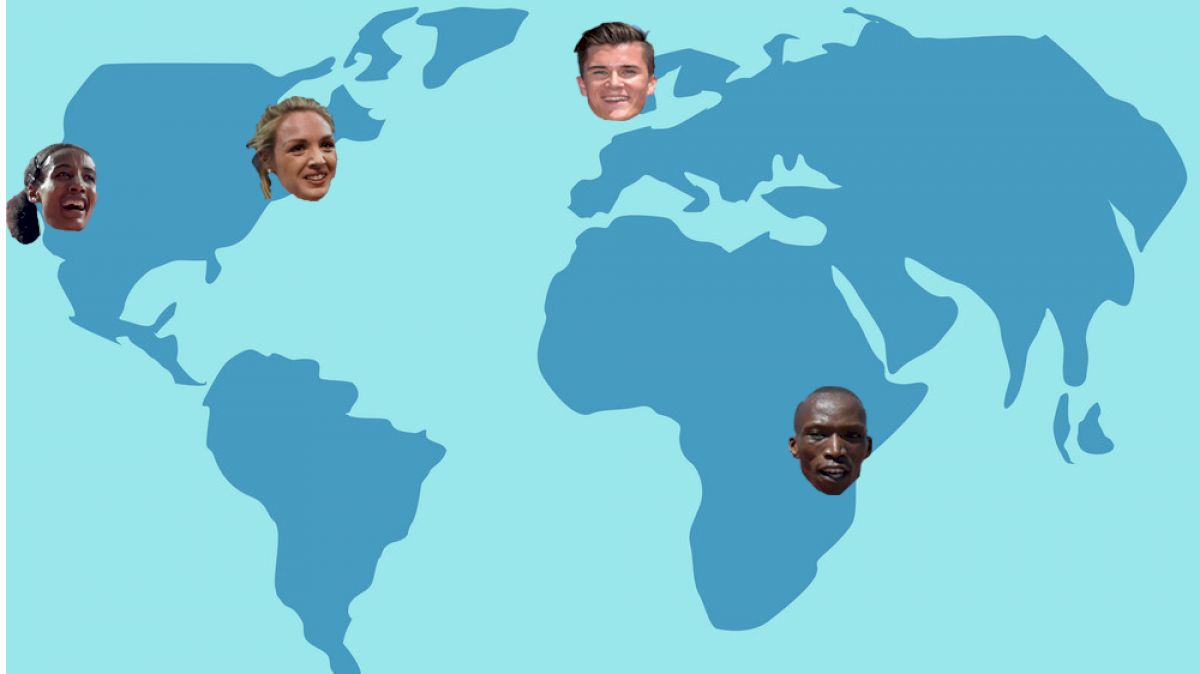Who Would Win A Global Virtual Mile?
Who Would Win A Global Virtual Mile?
With no immediate professional events to look forward to, we imagine what a professional one mile virtual race might look like.

Unlock this article, live events, and more with a subscription!
Already a subscriber? Log In
With racing in its traditional mode not happening right now across the globe, virtual races have emerged as a way for weekend warriors to still get their competitive fix. Many events have also done the noble thing and sent proceeds to those in need during this crisis. Racing alone and then posting results online is certainly not ideal, but it’s a fun way to break up the monotony of training-- while serving a good cause-- during a time when normalcy is still beyond the horizon.
Of course, professional athletes have to be cautious with their racing schedules, so it’s unlikely that we’re going to see Eliud Kipchoge or Shelby Houlihan submitting results to The Great Toilet Paper Chase. But in the words of Matthew McConaughey, “It’d be a lot cooler if they did.”
What if, in my dream world, every professional distance runner in the world agreed to participate in a virtual competition, say a mile race? Who would win? Consider that multiple factors would impact athletes-- geography, access to facilities, fitness and solo time trial ability-- so it’s entirely possible that the world’s fastest milers would find themselves in less than ideal racing conditions. Reigning 1500m world champion Timothy Cheruiyot, for example, would have to run his mile in Nairobi, Kenya, some 5,800 feet above sea level. Even an athlete accustomed to high elevations like Cheruiyot would be at a disadvantage compared to sea level runners. No altitude conversions in my virtual race.
For this exercise, I looked at the 10 fastest mile performers (or converted 1500m marks) from the last year to date to select my most likely virtual champions for both men and women. Here are the world’s 10 fastest milers since April 10, 2019:
Men
Timothy Cheruiyot (KEN), 3:45.47 (converted from 3:28.77 1500m)
Jakob Ingebrigtsen (NOR), 3:46.97 (converted from 3:30.16)
Ronald Musagala (UGA), 3:47.43 (converted from 3:30.58)
Charlie Da’Vall Grice (GBR), 3:47.47 (converted from 3:30.62)
Ayanleh Souleiman (DJI), 3:47.51 (converted from 3:30.66)
Filip Ingebrigtsen (NOR), 3:47.69 (converted from 3:30.82)
Taoufik Makhloufi (ALG), 3:48.29 (converted from 3:31.38)
Samuel Tefera (ETH), 3:48.30 (converted from 3:31.39)
Bethwell Birgen (KEN), 3:48.37 (converted from 3:31.45)
Marcin Lewandowski (POL), 3:48.38 (converted from 3:31.46)
Women
Sifan Hassan (NED), 4:10.51 (converted from 3:51.95)
Faith Kipyegon (KEN), 4:12.96 (converted from 3:54.22)
Gudaf Tsegay (ETH), 4:13.13 (converted from 3:54.38)
Shelby Houlihan (USA), 4:13.79 (converted from 3:54.99)
Genzebe Dibaba (ETH), 4:14.31 (converted 3:55.47)
Laura Muir (GBR), 4:14.62 (converted 3:55.76)
Gabriela Debues-Stafford (CAN), 4:15.01 (converted from 3:56.12)
Elle Purrier (USA), 4:16.85
Konstanze Klosterhalfen (GER), 4:17.26
Winny Chebet (KEN), 4:17.26 (converted from 3:58.20)
The easiest way to pare down each list is to first figure which athletes are currently at high-altitude training camps. To do this, I either consulted the athletes’ social media pages, or, if that option was not available, I used their most likely training location.
Based on admittedly imperfect research, here are the athletes who would be slowed by higher elevations:
Cheruiyot (Nairobi, Kenya), Musagala (Kapchorwa, Uganda), Da’Vall Grice (Flagstaff, Arizona), Tefera (Ethiopia)
Tsegay (Ethiopia)
For the men, the choice is easy when you consider that Cheruiyot is in the thin air of Nairobi. (Although, the 24-year-old did run a roaring 3:31.05 1500m in the Kenyan capital in 2017.) An injury kept 19-year-old Jakob Ingebrigtsen from competing indoors earlier this year, but his Instagram posts suggest that the second-fastest 1500m runner in the world last year is going full bore again. As we saw last year in Doha, the teenager isn’t afraid to go hard by himself, so he’d likely be good at a solo time trial. He may be staying indoors right now to practice social distancing at home in Norway, but Ingebrigtsen has a treadmill at his disposal for climate-controlled race efforts. Just make sure you keep that incline at zero, Jakob.
On the women’s side, I see no scenario where Sifan Hassan fails to conquer the virtual world in much the same way she did the real one in 2019. As of last update, the 2019 1500m and 10,000m world champion was training in Portland, Oregon, where she could likely still access the Michael Johnson Track on Nike’s campus in Beaverton despite many other tracks nationwide being closed. Hassan ripped her 3:51.95 PB from the front in the 1500m world championship final, and as she showed in the 10,000m, she’s one of the best milers in the world even after racing more than five miles. There’s simply no race, traditional or not, that the Dutchwoman can’t master.